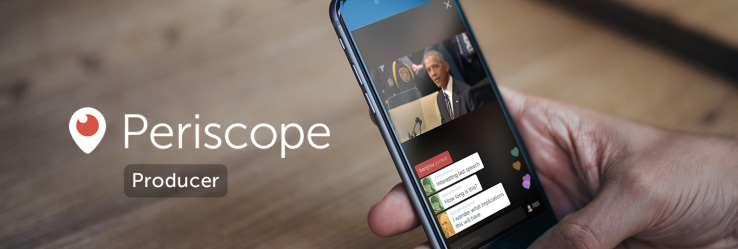The Week in Social: Fact Checking, Teen Habits, and Periscope Producer

Fact Checking on Social Platforms
You’ve seen it, right? It was the post about that politician, or that company, or that food you like that seems just a little too outlandish to let slide. Maybe you re-shared the article immediately. Or, perhaps you clicked through to see if it was just a joke. Maybe you even glanced at the URL to see if it was what you would consider a credible news source?
On average, you’re more likely to get your daily news from social posts sourcing from your friends, rather than directly from a news outlet. This is part of Facebook’s ongoing strategy to become, “the perfect personalized newspaper”. Putting these things together begs the question: what mechanism is checking the authenticity of the news you receive? Google announced this week that it will be adding fact-checking tags to stories in it’s news feed. In turn, Sarah Perez at Tech Crunch is asking Facebook to step up to the challenge of bringing credibility to the news shared on the social giant’s network.

Read more at TechCrunch
Salesforce walks away from Twitter
After suffering a year of slowing growth, Twitter has been hoping to be acquired by the likes of Apple, Google, or Disney. The social giant has seen an uplift in stock price over the last few weeks while rumors of various suitors circulated through the trades. While things were looking promising for Salesforce to pick up the $15Billion company, Salesforce CEO Marc Benioff has declared that “It wasn’t the right fit for us”. Twitter’s future remains uncertain it struggles for new users and increased engagements to attract ad dollars in the coming year.
Read more at Ars Technica
Digital habits of teens
You already knew that online media consumption has been slowly and steadily beating broadcast TV into submission. For a bit more specificity, a new report from Piper Jaffray surveyed 10,000 teens on brands and media consumption. Not surprising, Netflix (37%) and YouTube (26%) scored top rankings for video consumption, with cable TV (25%) sliding to third in popularity for the first time in the survey’s history. The results indicate that the younger audience desires high-production quality, on-demand availability, and affordable pricing models.

Read more at Business Wire
Instagram for Windows 10
Instagram has debuted its stand-alone app for Windows 10. Available on the Microsoft Store, the desktop version provides all the functions of Instagram on your PC, including Stories, Explore and Direct messaging. You’ll need a touch screen device like the Surface to upload photos for the time being, but we expect that limitation to be solved shortly as Facebook/Instagram make the app available for other platforms.
Read more at The Verge
Facebook Workplace
Internally, employees at Facebook have been using Facebook at Work to keep teams informed and lines of communication accessible for years. This week, rebranded as “Workplace”, Facebook has rolled out their specialized company communication tool to the public. Pricing options for companies that sign on will range from $1-$3 per user depending on the size of the company’s workforce. Workplace aims to provide enterprise internal communications to compete with the likes of Slack and Yammer, and has already seen sign on by RBS, Hootsuite, and Heineken.

Read more at VentureBeat
Prisma for Video
Ever wonder what it would look like if Edvard Munch or Roy Lichtenstein shared videos of their cat? Highly stylized photo manipulation app Prisma has added support for videos up to 15 seconds on iOS. Unlike previous versions of the app, the deep-learning algorithm processing is done directly on your mobile device without the need for an internet connection. The feature is rumored to be coming to Android in the coming weeks, and will eventually support the production of animated gifs.

Read more at The Verge
Facebook video on TV
The ideal scenario: you’re sitting on your couch with your mobile device or computer in front of you. You happen upon a video you want to watch that merits viewing on your enormous smart TV. With a quick gesture, you send the content from your device to your TV, effortlessly blending the first and second screen experience. This week, Facebook has added tools that will enable just that scenario. The new tools will stream content to Airplay and Chromecast devices, and will sustain Facebook’s competitive position in the online video marketplace.

Read more at TechCrunch
Periscope Producer: stream from any camera
One of the key limitations of creating high-quality live content is being locked to the camera on your mobile device. “Producer” is Periscope’s answer for those that wish to use professional quality cameras and devices to create live streaming content. Facebook announced a similar API to be made available for Live, but adoption has been slow. Periscope is working to make the integration widely available and simple to use in order to attract broadcasters and stay relevant with competing live services from YouTube and Facebook.

Read more at TechCrunch